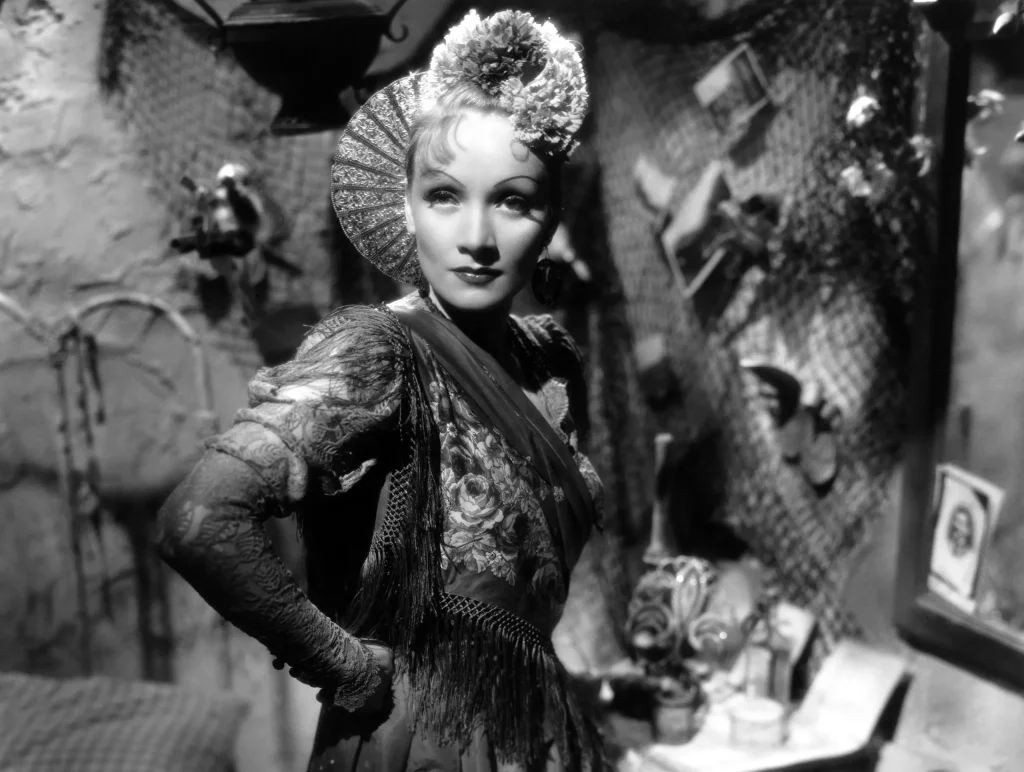Andre Sennwald, a once-celebrated film critic of Hollywood’s Golden Age, emerged as a witty and insightful voice amidst the cinematic revolution of the 1930s. His eloquent reviews not only critiqued the art of film during a transformative era but also engaged deeply with themes shaped by the Hays Code and the aesthetic shifts brought on by Technicolor innovations. As a key commentator on the works of directors like Josef von Sternberg, Sennwald navigated the complexities of cinema amidst the glamorous yet tumultuous backdrop of 1930s cinema. His sharp observations of the industry’s challenges and triumphs allowed audiences a deeper understanding of the films that defined a generation. By rediscovering Sennwald, we gain an invaluable perspective on the artistic landscape of a time when Hollywood was grappling with its identity and moral landscape.
Exploring the legacy of an iconic cinematic critic from a pivotal time in film history, one encounters a vibrant and nuanced perspective on the tumultuous transition of Hollywood in the early 20th century. This film commentator offered a blend of sharp wit and deep analysis, shedding light on the complexities introduced by censorship under the Hays Code and the artistic endeavors of visionary directors. His reviews articulated a passion for the evolving medium of film, highlighting everything from the lavish spectacles to the sobering realities of 1930s storytelling. By revisiting the works of this notable critic, we unearth the layered nuances of the cinematic arts that reverberated through an era characterized by both innovation and constraint. The journey through his critiques provides a refreshing window into the power of film as it carved its place in popular culture.
Andre Sennwald: A Visionary Film Critic
Andre Sennwald emerged as a compelling voice in the realm of film criticism during the Hollywood Golden Age, quickly making his mark at a remarkably young age. He worked for the New York Times as a film critic, where he navigated the vast landscape of 1930s cinema, providing readers with insightful critiques that often transcended the immediate context of the films he reviewed. Sennwald’s ability to articulate the burgeoning art of cinema reflected a deep understanding of the medium, one that acknowledged the ongoing complexities of storytelling and visual expression within the confines of the Hays Code—a set of moral guidelines that reshaped Hollywood productions during his brief career.
His writings reveal an astute awareness of the significant transformations occurring in filmmaking, such as the rise of Technicolor and the shift towards sound films. Sennwald recognized these changes not just as technical advancements but as pivotal moments influencing the emotional and narrative fabric of movies. This perspective positioned him as a forward-thinking critic, who not only evaluated films on their immediate merit but also contemplated their implications for the future of cinematic storytelling. Throughout his reviews, he frequently showcased a blend of critical acumen and a passion for the art, enabling him to champion films that pushed boundaries, even in an era defined by stringent censorship.
The Impact of the Hays Code on Cinema
The Hays Code marked a significant turning point in the landscape of American cinema, imposing limitations on subject matter to ensure films were deemed morally acceptable to audiences. Andre Sennwald, working as a film critic during this tumultuous time, astutely observed how the Code influenced Hollywood’s storytelling. He noted that rather than foster creativity, it often led filmmakers to retreat into nostalgic themes and sanitized narratives, stripping films of their raw emotional power. In his critiques, Sennwald candidly lamented the erosion of cinematic ingenuity, attributing it partly to the industry’s compliance with external pressures for a moralistic portrayal of society.
Sennwald was particularly vocal about how the Hays Code stifled the representation of socially relevant themes and nuanced characters. He pointed out that, as studios scrambled to appease censors, they often resorted to cliched character arcs and overt patriotism, undermining the complexity that films could—and should—explore. By highlighting the tension between artistic expression and commercial constraints, Sennwald’s reviews served as both a critique of the Hays Code and a call for a return to more authentic storytelling that resonated with real societal issues, thus making his voice a critical one in the discourse surrounding 1930s cinema.
Josef von Sternberg: A Subject of Contradiction
Josef von Sternberg’s work continually intrigued and perplexed Andre Sennwald, who regarded the director as a unique talent whose style diverged sharply from traditional Hollywood formula. Sennwald recognized von Sternberg for his innovative cinematographic techniques and his artistic vision that defied the norms enforced by the Hays Code. In his review of ‘The Scarlet Empress,’ Sennwald commended the director’s bold approach yet criticized the film’s structural incoherence, suggesting that while von Sternberg’s ambition was laudable, the execution faltered under the weight of its aspirations.
However, it was ‘The Devil Is a Woman’ that truly captured Sennwald’s admiration, as he appreciated its provocative commentary on gender roles and sexuality in a repressive society. Sennwald’s analysis highlighted how the film critiqued romanticized notions of femininity, presenting Marlene Dietrich as an embodiment of female agency rather than mere objectification. In this way, Sennwald’s critiques of von Sternberg’s films became a lens through which he examined broader societal tensions, making him not just a film critic, but a cultural commentator who sought to articulate the significance of cinema in reflecting and shaping contemporary values.
Exploring 1930s Cinema through Sennwald’s Lens
Through Andre Sennwald’s critiques, the 1930s cinema emerges as a vibrant tapestry woven with the threads of innovation and tradition. This decade witnessed the rise of sound films and Technicolor, transforming the viewing experience and expanding narrative possibilities. Sennwald was uniquely positioned to observe these changes, and his insights revealed how filmmakers adapted to evolving technologies while grappling with the constraints of the Hays Code. His reviews provide a cross-section of cinematic trends, from the grandiose spectacle of musicals to the introspective narratives of independent productions, showcasing his keen appreciation for diverse forms of storytelling.
Sennwald’s examination of films from this era also reflects a broader cultural context, as Hollywood wrestled with its identity amidst societal upheaval. By analyzing narrative themes and production choices, he charted how filmmakers responded to the turbulence of the Great Depression, showcasing works that evoked both escapism and critical reflection. The nuanced critiques found in Sennwald’s work allowed him to chronicle the evolution of American cinema during its formative years, preserving the legacy of a diverse array of films that continue to resonate with audiences today.
Sennwald’s Passion for Holistic Storytelling
One of the hallmarks of Andre Sennwald’s critique was his unwavering passion for comprehensive storytelling in cinema. He believed in the power of films to convey deep emotional truths and complex narratives, prioritizing substance over superficial spectacle. In his extensive reviews, Sennwald advocated for narratives that offered genuine reflections of human experience, pushing filmmakers to dig deeper than mere entertainment. This pursuit of authenticity in storytelling made him an influential voice, as he championed films that dared to challenge societal norms and explore intricate themes.
Sennwald’s passionate pursuit extended beyond commercial productions, as he also recognized the value of independent films and international cinema. His reviews often praised works that demonstrated inventive storytelling methodologies, whether through hybrid forms like Dziga Vertov’s documentary approaches or the incisive character studies in Alfred Hitchcock’s thrillers. In doing so, Sennwald became a clarion call for filmmakers and audiences alike to demand more from cinema, valuing artistry and emotional resonance in an era increasingly concerned with mass appeal.
The Enduring Legacy of Andre Sennwald
Despite his tragically brief life, Andre Sennwald left an indelible mark on film criticism that continues to resonate today. His ability to articulate the nuances of cinematic narratives during a pivotal time in Hollywood’s evolution has earned him a place in the annals of film history. By melding critical analysis with passionate prose, Sennwald’s work presents a vibrant exploration of 1930s cinema, capturing not only the artistic triumphs but also the sociopolitical challenges that films confronted. His insights serve as a valuable resource for understanding the dynamics of cinema and its reflection of contemporary society.
Sennwald’s legacy extends beyond his lifetime, as modern film critics and scholars draw from his pioneering approach to critique. His emphasis on evaluating films through a multifaceted lens—inclusive of artistic merit, cultural relevance, and emotional depth—has influenced generations of film commentators. As contemporary cinema grapples with its own complexities, Sennwald’s vision for a more thoughtful critique endures, encouraging ongoing dialogue surrounding the art of filmmaking and its capacity to resonate with audiences on a profound level.
The Role of Humor in Sennwald’s Criticism
Humor played a significant role in Andre Sennwald’s critiques, allowing him to address challenging subjects with a blend of wit and insight. His keen sense of sarcasm emerged particularly in his reviews of films that exhibited glaring deficiencies, often providing readers with astute observations wrapped in humor. For instance, Sennwald’s critique of ‘West Point of the Air’ highlighted the film’s propagandistic tendencies, cleverly using humor to underscore the absurdity of its themes while simultaneously fostering a critical conversation about the glorification of militarism in Hollywood.
This humor not only served as an engaging stylistic choice but also positioned Sennwald as a relatable critic in an era often dominated by overly serious film evaluations. By incorporating clever quips and sardonic commentary, he managed to balance critique with entertainment, drawing readers into deeper reflections on themes of authenticity and artistic integrity in cinema. This playful approach to criticism invites audiences to engage with the material more actively, exemplifying Sennwald’s belief that film should not merely be consumed but interacted with, appreciated, and analyzed.
Navigating Genres: Sennwald’s Eclectic Taste
Andre Sennwald’s reviews reflect a broad appreciation for the diverse genres that characterized 1930s cinema. His willingness to engage with everything from screwball comedies to melodramatic epics showcases his eclectic taste and deep understanding of cinematic language. Rather than confining himself to a specific genre, Sennwald embraced the innovative potential within every film, recognizing that each offered a unique gateway into the complexities of human experience. This open-mindedness allowed him to champion films that other critics might overlook, painting a richer picture of the cinematic landscape.
His assessment of different genres often revealed underlying commonalities, such as the exploration of societal issues or the examination of cultural values. Sennwald’s enthusiasm for musicals, for instance, did not solely stem from their entertainment value; he also valued their ability to reflect societal escapism during tumultuous times. His appreciation for genre-blending narratives further illustrates his commitment to viewing cinema as an evolving art form that continuously adapts to societal changes. In this way, Sennwald’s work transcends simple categorization, revealing a profound engagement with the craft of filmmaking itself.
Reflections on Film’s Artistic Evolution
As a film critic during a pivotal period in cinema history, Andre Sennwald witnessed the medium’s evolution firsthand. His critiques encapsulate the transition from silent films to talking pictures, as well as the burgeoning use of Technicolor, marking a significant artistic leap for filmmakers. Sennwald’s ability to articulate these changes highlights his keen insight into the evolving nature of cinematic storytelling, allowing readers to appreciate the broader context of artistic innovations as they unfolded throughout the 1930s.
Moreover, Sennwald’s reflections on these transformations serve as a reminder of the cyclical nature of artistic evolution within film. His critiques encouraged a narrative that engaged with both the present moment of cinema and its historical roots. This perspective continues to resonate, as contemporary filmmakers navigate similar challenges and innovations in a rapidly changing landscape. By emphasizing the importance of historical context in film criticism, Sennwald provides a framework that remains relevant for current discussions around artistic expression and its continuous evolution.
Frequently Asked Questions
Who was Andre Sennwald and what was his contribution to film criticism during the Hollywood Golden Age?
Andre Sennwald was a prominent film critic during the Hollywood Golden Age, known for his insightful reviews and unique perspective on 1930s cinema. He served as a film critic for the New York Times from 1934 until his untimely death in 1936, where he produced over three hundred reviews that captured the essence of the era’s films, including critiques of both mainstream and independent productions.
What impact did the Hays Code have on Andre Sennwald’s film critiques?
The Hays Code significantly affected Andre Sennwald’s film critiques as he explored its implications on the artistic freedom of filmmakers. Sennwald noted how the Code restricted creativity, leading studios to produce films that often abandoned contemporary realities in favor of nostalgic themes. He critiqued films that conformed to these restrictions, providing a powerful commentary on censorship in 1930s cinema.
How did Andre Sennwald view Technicolor films, particularly in relation to Hollywood’s filmmaking practices?
Andre Sennwald had a mixed view of Technicolor films, recognizing their potential while also critiquing the quality of storytelling in some cases. He noted the release of the first Technicolor feature, ‘Becky Sharp,’ calling it both ‘dramatically tedious’ and ‘incredibly thrilling,’ illustrating his appreciation for the technological advancement while emphasizing the need for strong narratives in Hollywood’s golden age films.
What were Andre Sennwald’s thoughts on Josef von Sternberg’s filmmaking style?
Andre Sennwald admired Josef von Sternberg for his unique filmmaking style, which he regarded as a hallmark of personal artistic expression within Hollywood. Despite critiquing some of Sternberg’s works as chaotic or incoherent, Sennwald found value in his innovative visual storytelling, particularly in films like ‘The Devil Is a Woman,’ which challenged conventional representations of women in cinema during the Hays Code era.
How did Sennwald’s reviews reflect the cultural and social issues of the 1930s?
Andre Sennwald’s reviews often reflected the cultural and social issues of the 1930s by critiquing how films portrayed contemporary themes such as militarism, propaganda, and the social dynamics of the time. His sharp analyses illuminated the political undercurrents in Hollywood films, making him a crucial voice for social critique in film criticism during the Hollywood Golden Age.
What genres of films did Andre Sennwald cover in his critiques, and how did he assess them?
Andre Sennwald covered a wide range of genres in his critiques, including comedies, action films, horror, and musicals. He assessed these films with a discerning eye, often highlighting their entertainment value while also critiquing their artistic merit. His reviews provided thoughtful insights into the evolving landscape of 1930s cinema and its various genres.
What legacy did Andre Sennwald leave behind in the realm of film criticism?
Andre Sennwald’s legacy in film criticism is marked by his forward-thinking perspective and passionate advocacy for artistic integrity in cinema. His ability to address complex themes within Hollywood films and critique the industry’s shortcomings established him as one of the most respected film critics of his time, influencing future generations of film critics.
In what ways did Andre Sennwald anticipate future trends in cinema during his brief career?
During his brief career, Andre Sennwald anticipated future trends in cinema by embracing advancements in technology and recognizing the shift towards more personal storytelling in films. His critiques often went beyond the films of his time, considering their potential impact on the future of the art form, as he championed filmmakers who pushed boundaries and experimented with new cinematic techniques.
| Key Points | |
|---|---|
| Andre Sennwald’s Career | Renowned film critic from 1934 to 1936, Sennwald wrote over 300 reviews. |
| Perspective on Film | Provided insightful critiques of diverse genres, while also recognizing the impact of the Hays Code. |
| Cinematic Innovations | Witnessed the introduction of Technicolor and the evolution of sound in films. |
| Social Commentary | Critiqued Hollywood’s portrayal of reality and its political undertones. |
| Legacy | Passed away at 28, leaving a profound impact on the critical discourse around cinema. |
Summary
Andre Sennwald was a pivotal figure in the realm of film criticism during Hollywood’s Golden Age. His brief but impactful career as a critic provided invaluable insights into the rapidly evolving cinematic landscape, from Technicolor innovations to the stringent regulations of the Hays Code. Sennwald’s acute observations and critiques not only shaped the discourse surrounding films of his time but also highlighted the artistic struggles within Hollywood. His legacy continues to influence film criticism today, reminding us of the vital role that film critics like Sennwald play in shaping our understanding of cinema.



